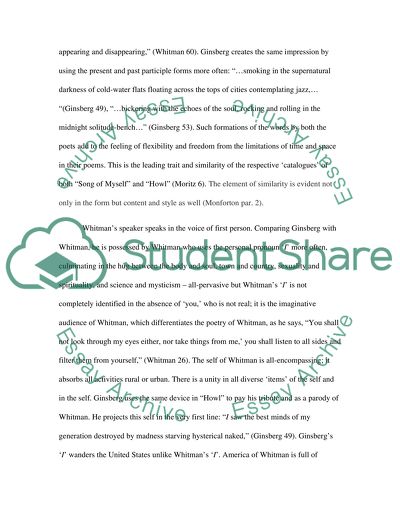Cite this document
(“Whitman's Song of Myself and Ginsberg's Howl Essay”, n.d.)
Retrieved from https://studentshare.org/literature/1450232-comparing-whitmans-song-of-myself-with-ginsbergs-howl
Retrieved from https://studentshare.org/literature/1450232-comparing-whitmans-song-of-myself-with-ginsbergs-howl
(Whitman's Song of Myself and Ginsberg'S Howl Essay)
https://studentshare.org/literature/1450232-comparing-whitmans-song-of-myself-with-ginsbergs-howl.
https://studentshare.org/literature/1450232-comparing-whitmans-song-of-myself-with-ginsbergs-howl.
“Whitman's Song of Myself and Ginsberg'S Howl Essay”, n.d. https://studentshare.org/literature/1450232-comparing-whitmans-song-of-myself-with-ginsbergs-howl.


